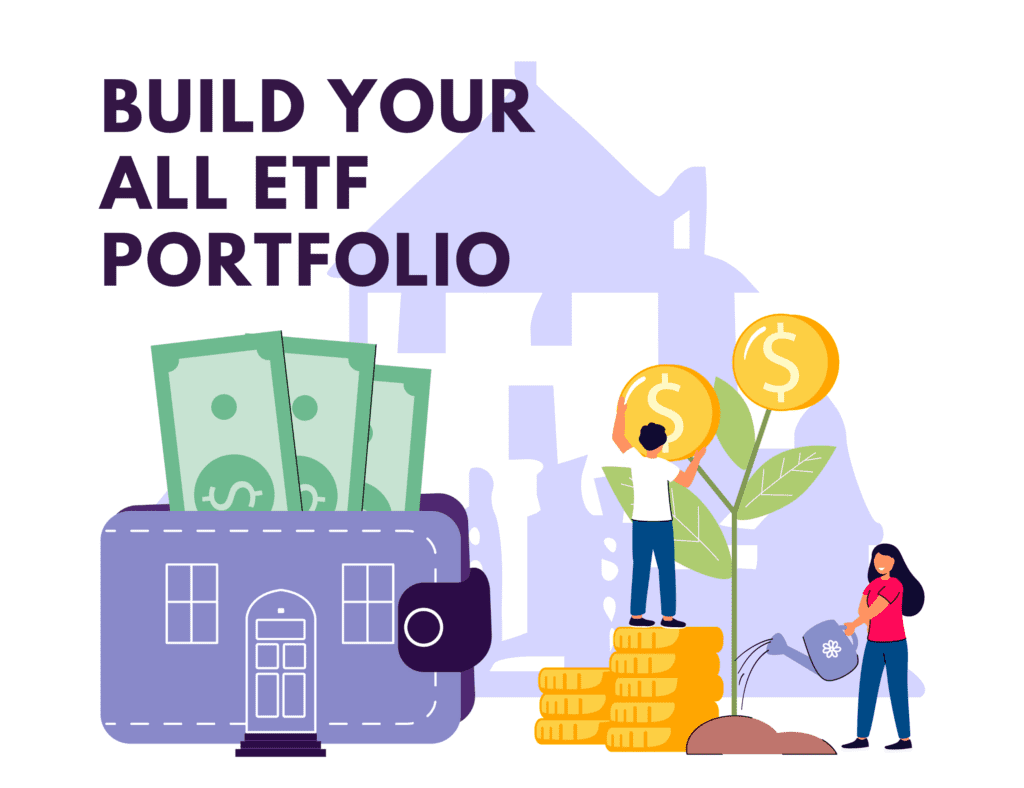Building a Strong Portfolio with ETFs: Essential Steps and Strategies
Investing in ETFs is a prudent and effective method to build a diversified portfolio that aligns with one’s investment goals. To achieve this objective, there are several essential steps that an investor should consider.
Firstly, an investor must define their investment goals. They need to carefully assess whether they want to focus on long-term growth, generate income, or a combination of both. This crucial step will help them select the appropriate ETFs to achieve their objectives.
Next, an investor should select the asset classes that are best suited to their investment strategy. This could include equities, bonds, real estate, commodities, or other asset classes that align with their risk appetite and financial goals.
After selecting the asset classes, an investor should then research the ETFs that track those asset classes. This research must include evaluating their expense ratios, liquidity, and other metrics to ensure that they align with their investment goals.
An investor should also focus on diversification to ensure that their portfolio remains balanced and aligned with their goals. This can be achieved by selecting multiple ETFs that track different asset classes and rebalancing them periodically to ensure the portfolio remains on track.
Finally, an investor should monitor their portfolio regularly to ensure that it continues to meet their investment objectives. Any changes to the portfolio must be made based on objective assessments to avoid emotional or irrational decisions.
In conclusion, investing in ETFs is a well-established and effective method for building a diversified portfolio. By following these steps, an investor can make informed decisions and create a portfolio that aligns with their financial goals, risk appetite, and investment objectives.
Portfolios by level of risk
Investors have different levels of risk tolerance, which influences the types of portfolios that they may choose to build. Here are some common types of portfolios based on risk tolerance:
Conservative Portfolio
A conservative portfolio is suitable for investors who have a low tolerance for risk. This type of portfolio usually contains a mix of fixed-income securities such as bonds, money market funds, and low-risk stocks. The primary goal of this portfolio is to preserve capital and generate steady income with low volatility.
Moderate Portfolio
A moderate portfolio is suitable for investors who are willing to take on some level of risk to achieve moderate returns. This type of portfolio may contain a mix of stocks, bonds, and other asset classes. The goal of this portfolio is to achieve a balance between capital preservation, steady income, and moderate growth.
Aggressive Portfolio
An aggressive portfolio is suitable for investors who are willing to take on higher levels of risk to achieve potentially higher returns. This type of portfolio may contain a mix of high-risk stocks, small-cap stocks, and other high-risk investments. The goal of this portfolio is to achieve high growth, and investors should be prepared for higher volatility and potential losses.
Income Portfolio
An income portfolio is suitable for investors who prioritize generating income over capital appreciation. This type of portfolio usually consists of high-yielding fixed-income securities such as bonds, preferred stocks, and dividend-paying stocks. The goal of this portfolio is to generate a steady stream of income with minimal risk.
Growth Portfolio
A growth portfolio is suitable for investors who prioritize long-term growth over current income. This type of portfolio may contain a mix of high-growth stocks, mutual funds, and ETFs. The goal of this portfolio is to achieve long-term capital appreciation, and investors should be prepared for higher volatility and potential losses.
It’s essential to note that each investor’s risk tolerance is unique, and portfolios should be tailored to individual needs and goals. A financial advisor can help investors determine their risk tolerance and create a portfolio that aligns with their investment objectives.
Growth Portfolio – allocation breakdown
80% Equity / 20% Fixed Income
| Fund | Name | Asset class | Weight |
| XIU.TO | Ishares S&P TSX 60 Index ETF | Equity | 25% |
| ZSP.TO | BMO S&P 500 Index ETF | Equity | 35% |
| ZQQ.TO | BMO Nasdaq 100 Hedged To CAD Index ETF | Equity | 10% |
| ZEA.TO | BMO MSCI EAFE ETF | Equity | 10% |
| CSAV.TO | CI High Interest Savings ETF | Fixed Income | 10% |
| ZAG.TO | BMO Aggregate Bond Index ETF | Fixed Income | 10% |
| Total | 100% |
100% Equity
| Growth | |||
| Fund | Name | Asset class | Weight |
| XIU.TO | Ishares S&P TSX 60 Index ETF | Equity | 25% |
| ZSP.TO | BMO S&P 500 Index ETF | Equity | 35% |
| ZQQ.TO | BMO Nasdaq 100 Hedged To CAD Index ETF | Equity | 20% |
| ZEA.TO | BMO MSCI EAFE ETF | Equity | 10% |
| ZEM.TO | BMO MSCI Emerging Markets Index ETF | Equity | 10% |
| 100% |

